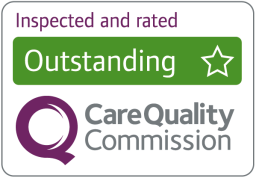Our STI test kits
With the SH:24 STI test kits, you’ll take samples from parts of your body at home.
We give you all the instructions and kit you need to make this simple and straightforward. Post your samples back to our lab for testing. And get your results by text, quickly and confidentially.
How SH:24 testing works
Order through our website - we’ll ask you a few questions so we know which kit to send you.
Your test kit arrives in the post - our STI tests arrive in a plain, letterbox-friendly pack, delivered by Royal Mail.
Take your samples - inside the kit you’ll find everything you need to take some samples at home. Set aside 10 minutes to do the kit, and read the instructions carefully before you start.
Post them back - post your samples to our lab on the day you take them, from any Royal Mail postbox.
Results and support by text - when your samples reach our lab, you’ll get a text letting you know. You’ll usually get your results within 72 hours of your samples arriving. We might ask to call you to talk about your results. Our clinical team are only a text away if you have any questions or need further support.
If you get a positive result - we’ll help you get the treatment you need. In some regions, we can send you treatment for chlamydia through the post.
If our free service is not available in your area, you can contact your local NHS sexual health clinic. Or you can buy STI test kits from our sister service Fettle.
What’s in the kits?
When you order, we’ll let you know what samples you’ll need to take to get tested. Our kits will test for the most common STIs using a blood sample, a urine sample or a vaginal, throat or rectal swab.
All kits come with everything you need to take your samples and post them back to us. Including full instructions, helpful tips and advice and a Freepost pack for returning them.
Make sure you read the instructions before taking any samples.
How to use your test kit
All our test kits come with detailed step-by-step instructions to help you take samples at home. Here you can take a look at how to use our kits.
Blood sample
Use this kit to take a finger-prick blood sample that can be tested for HIV, syphilis, hepatitis B and hepatitis C. Check out our instructions and advice for taking your sample.
Urine sample
If you have a penis, we’ll ask for you to send a urine sample to the lab so we can test for chlamydia and gonorrhoea. Read our step-by-step instructions for taking your sample.
Vaginal swab sample
If you have a vagina, you can test for chlamydia and gonorrhoea by wiping a swab inside your vagina. Find out more about using your kit.
Throat swab sample
It can be possible to get gonorrhoea or chlamydia in your throat. If we send you a throat swab, you'll need to take a sample from the back of your throat to test for these infections.
Rectal swab sample
Gonorrhoea and chlamydia can be passed on during anal sex. If we need to check for infections in your anus, we'll include a swab in your kit so you can take a sample from your anus.
Getting your test results
Once you’ve posted your samples back to our lab in the Freepost pack, we’ll keep you updated by text message.
You’ll get a message when your samples arrive at the lab, and we’ll text you your results as soon as possible, usually within 72 hours. If there’s a delay, we’ll let you know.
We may need to call you to talk about your result. If we do, we’ll always text you first to arrange a time that suits you.
How do I get treatment?
If you have an infection, our clinical team will help you get further support and treatment. In certain regions, we can send you chlamydia treatment by post, or we can help you find a sexual health clinic that can treat your infection.
If your test result for HIV, syphilis, hepatitis B or C comes back as reactive or postive, our clinical team will support you to get further tests.
When do STIs show in tests?
Most STIs don't show in a test straight away. So you need to wait a few weeks before a test will be accurate. This time is called the window period. The window periods are different for different infections.
Do you need help with something else?
Find sexual health services near you
Get sexual health advice from the experts



